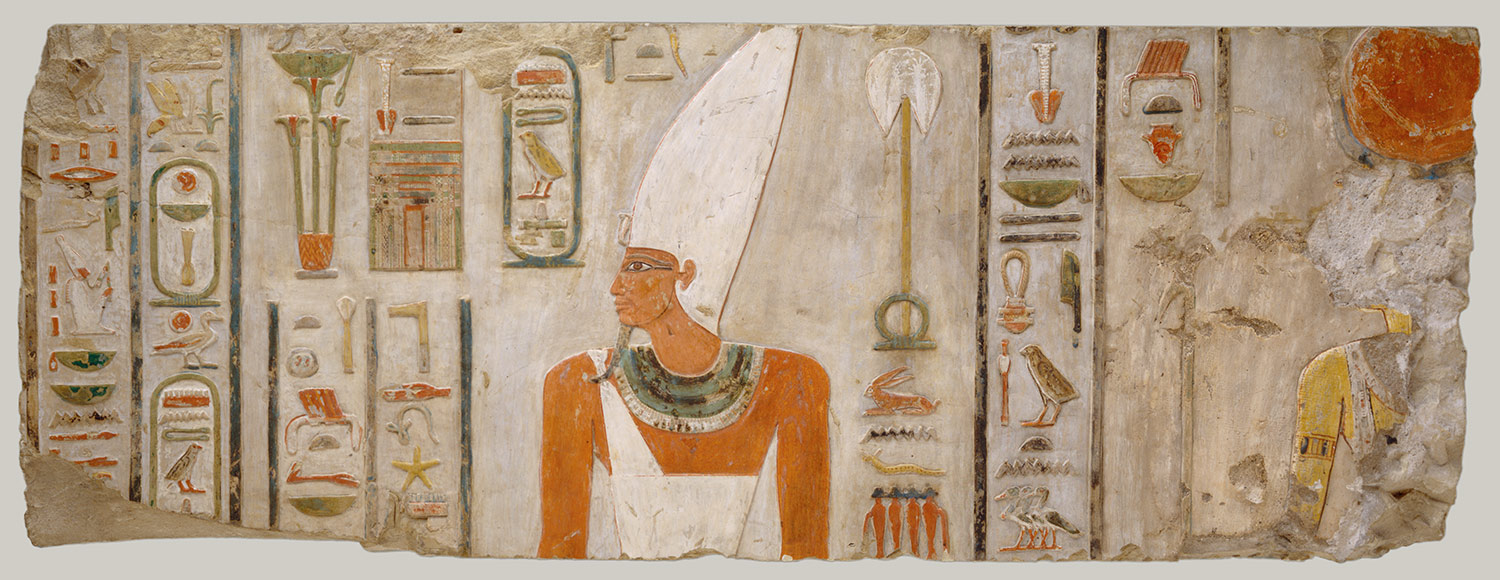
Nebhepetre Mentuhotep II, a member of the ruling family of Thebes, reunited Egypt at the end of the First Intermediate Period, becoming the founder of the Middle Kingdom. During his reign (ca. 2051–2030 B.C.), he constructed an innovative mortuary complex that included a terraced temple with porticoes set against the desert cliffs of western Thebes. The temple was decorated with scenes executed in superbly carved relief painted in brilliant colors. In this detail of a well-preserved fragment, the king is shown wearing the white crown of Upper Egypt, a broad collar of blue and green beads, and a false beard attached by the strap visible along his jawline. This is not the straight beard of the living king but the curving divine beard indicating that he has joined the ranks of the gods. The name Mentuhotep ("Montu [a local Theban god] is satisfied") is enclosed in the oval-shaped cartouche in front of his face, and his Horus name, Sematawy ("Uniter of the Two Lands [Upper and Lower Egypt]"), is seen at the top of the rectangular device—known as a serekh—next to the cartouche.
Mentuhotep II was regarded by later generations of Egyptians as one of their greatest kings and we know that his mortuary temple was still in use during Dynasty 19, more than seven centuries after the king's death, when some of the reliefs were restored. The temple was eventually destroyed in an earthquake and was partially buried by debris from the cliffs above.




No comments:
Post a Comment